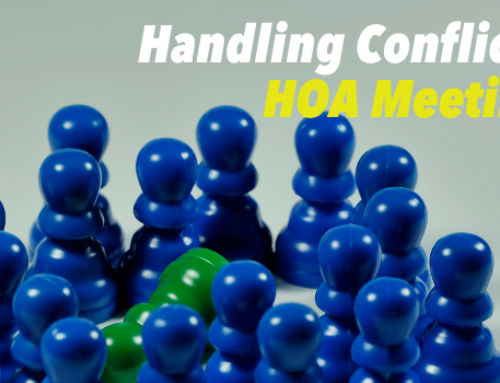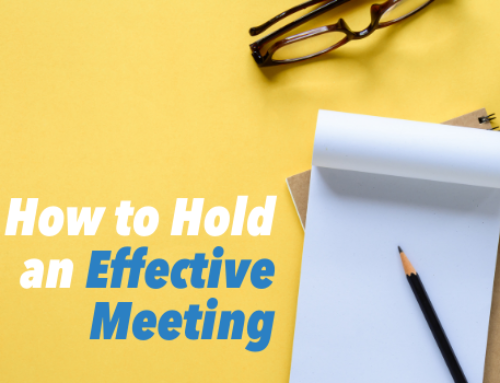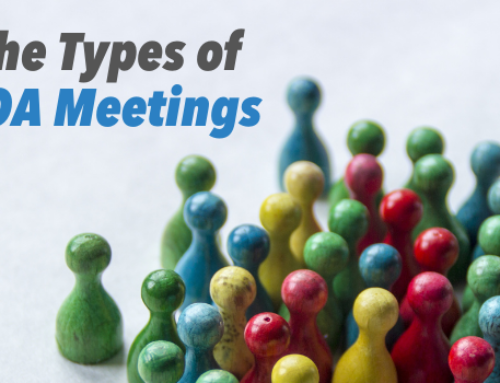If you or your board have never held an executive board meeting, or closed executive session, you might be wondering what is needed to best prepare. In this article, we’ll go over several tips to help you and your board lead a successful and effective executive board meeting.
Time it Right
Just like regular board meetings, executive meetings require a quorum of voting members for business to be conducted effectively. Since everyone has busy schedules, it can be helpful to schedule your executive meeting either directly before or after your regular board meeting. Not only will this help ensure that more board members are able to attend, but it will also make it easier on your schedule.
That being said, sometimes executive meetings will require the attendance of a homeowner or employee. If their schedule doesn’t align with when the regular board meeting is scheduled, you can call the executive meeting at a different time. However, make sure to check your local state law and governing documents to see if there are any limitations on when a closed, executive session can be held for your Association.
Keep it Secure
If you plan on conducting your meetings online, just ensure that the meeting ID and passwords for the executive meeting are only shared with the board members and homeowners who are meant to be in attendance, to help ensure that the meeting stays private and secure.
If you use the same online meeting room for multiple executive sessions, it’s best practice to regularly update the meeting ID and password for your meeting room. If a homeowner needed to attend one executive meeting, you wouldn’t want to grant full access to all future executive sessions, where their attendance would not be needed.
You might find that it’s easier to use the same online meeting room for both the executive session and the regular board meeting. In this case, it’s best to utilize the online meeting space’s administrative features to avoid any unexpected drop-ins and to push all other homeowners to the lobby until the regular meeting can begin.
Another item to keep secure will be the meeting minutes. While it is important to take detailed meeting minutes during an executive session, to ensure that all items discussed are recorded properly, it’s likely that the minutes will include sensitive information. If you’re storing your meeting minutes online, ensure that the minutes are either stored in a place where regular homeowners don’t have access or password protect the file to make it secure.
Be Prepared
Just like a regular board meeting, when it comes to executive sessions it’s best to always ensure that you are prepared ahead of time. First, you should know what is and isn’t allowed to be discussed in executive session. The rules for this can vary based on your Association’s governing documents as well as local state law. To ensure that you and your fellow board members don’t tread into off-limits territory, it’s good to have a copy of the items that can and cannot be discussed on hand.
Once you’re clear on what can be discussed, it’s time to prepare an agenda. A detailed agenda will not only help you ensure that the meeting stays on track, but that all parties involved are properly prepared for what is to be discussed during the meeting. Once the agenda has been drafted, it should be distributed to all board members for review prior to the meeting.
Finally, if any specific documentation is needed for the meeting, it’s best to ensure that the documentation is handy and readily available. If needed, any necessary documentation can be distributed along with the meeting agenda.
Focus on the Goal
Since executive board meetings often revolve around subject matter that is either private or sensitive in nature, there’s a good chance that you might run into some conflict at some point when running one of these types of meetings. If you’re anticipating that conflict might arise in your meeting, it’s best to remember to focus on the goal or matter at hand. This is one of the reasons why having a good, detailed agenda can be so important. If you run into conflict, focusing the conversation back toward the task at hand can help avoid the conversation from steering off-course.
Over at Boardline Academy, there is a course that can help provide even more tips for handling conflict in your meetings. Check out the Business Ethics & Professionalism course by clicking the link here.
Before you Adjourn—Know What Happens Next
Once you’ve successfully navigated your way through your executive session, it’s important that all parties involved know what, if any, steps need to be taken next. Before the meeting is called to a close, ensure that each party involved has a clear understanding of what is needing from them going forward and determine if any future meetings will be needed.
Depending on your Association’s governing documents or local state law, you might also be required to provide a generalized summary (in terms that doesn’t disclose any sensitive information or breach the privacy of any homeowners) of any decisions made or expenditures approved during the meeting. It’s best to double check if this is required for your Association prior to the meeting being held, so you can save time by being prepared.
Don’t Over Do It
Now that you know how to successfully run an executive meeting, you might find the closed, secure nature of this type of meeting appealing. But it’s best to remember to limit these types of meetings to when they are vital to the running of your community. Homeowners are as passionate about the community as the Board members and want to be privy to the decisions that are being made for their neighborhood.
If you’re in the market for the best HOA management company, Spectrum Association Management offers a refreshingly different approach to HOA management.
We also offer training and resources for board members so you could be the best HOA Member you can be! Visit us at Boardline Academy today!







